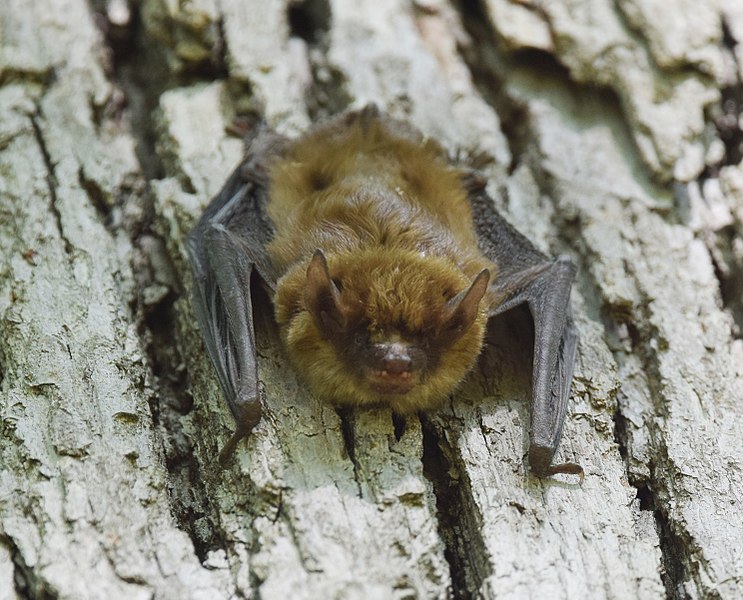“Bats are attracted to warm, quiet spaces with easy access, making attics and sheds ideal nesting spots.”
Ever find yourself hearing strange fluttering noises at night or notice tiny droppings in your attic? You might have bats making themselves at home! Bats are beneficial creatures that help control insect populations, but when they start roosting in your house, it can become a bit of a nuisance. Understanding what draws them to your property can help you prevent an unexpected colony from forming.
Why Bats Are Moving Into Your Home: The Surprising Factors
Abundant Insects
Bats are primarily insectivores, meaning their diet consists mostly of insects. If your yard or home has a high population of flying bugs, particularly mosquitoes, moths, or beetles, it becomes a prime feeding ground for bats. These creatures are incredibly efficient hunters, capable of consuming hundreds of insects in a single night, which makes an insect-rich environment highly attractive.
Insects are often drawn to properties with standing water, dense vegetation, or exterior lighting, all of which provide the perfect habitat for their breeding and feeding. Ponds, birdbaths, or poorly draining areas around your home may invite insects, inadvertently inviting bats as well. Outdoor lighting, while helpful for human activities, attracts flying insects that bats rely on for food.
The more insects that are around, the more likely bats are to return repeatedly, especially during the warmer months when insect populations peak. This steady food source can turn your home into a regular stop on their nightly hunting routes, increasing the chance they’ll roost nearby or inside your home.
Shelter Opportunities
Bats are always on the lookout for safe, cozy spaces to roost, and your home can offer the perfect shelter. Small gaps, cracks, or loose shingles in your roof or siding provide easy access points for bats to squeeze through. These tiny crevices may seem insignificant, but bats can fit through spaces as small as half an inch, making it effortless for them to slip inside.
Once they find their way in, bats are drawn to areas that mimic their natural roosting environments—dark, quiet, and undisturbed spaces. Attics, barns, chimneys, and even wall voids can provide ideal shelter, allowing them to hide during the day. Your home, especially if it’s older or hasn’t been well-maintained, can unintentionally offer multiple entry points and roosting spots.
If bats find a suitable shelter in or around your house, they’ll often stay for extended periods, especially if the location is warm and dry. This can lead to a growing colony over time, as bats seek out the comfort and security your home provides for both daily roosting and seasonal hibernation.
Related: What is the best bat deterrent?
Warm, Dark Spaces
Bats are drawn to environments that replicate the caves and hollows they naturally roost in, and your home’s attic, chimney, or basement can provide the perfect substitute. These areas offer the warmth, darkness, and protection that bats crave. During the day, bats seek out these quiet, hidden spots to rest before heading out to hunt at night.
The warmth in attics and other enclosed spaces is particularly appealing. Since bats are sensitive to temperature, they prefer locations that provide a consistent climate, especially as temperatures drop in the fall. Insulated spaces in your home can offer the ideal environment for bats to stay warm and secure without being disturbed.
Once they find a spot that meets their needs, bats are likely to return year after year. This is especially true for maternal colonies, where female bats seek safe spaces to raise their young. These warm, dark areas can quickly become a permanent roost if left unchecked.
Outdoor Lighting
While outdoor lighting may serve as a way to illuminate your property at night, it can also become a beacon for insects—and where there are insects, bats are sure to follow. Lights attract moths, mosquitoes, and other flying bugs, which makes them an ideal hunting ground for hungry bats. If you have bright exterior lights or decorative lighting that stays on after dark, you might be unknowingly luring bats closer to your home.
Certain types of lighting, especially those that emit a lot of UV light, tend to draw insects in higher numbers. Streetlights, porch lights, and even garden lamps can act as magnets for bugs, creating a feeding frenzy for bats. The more insects that gather around these light sources, the more appealing the area becomes for bats looking to feast.
This nightly routine can quickly turn your well-lit areas into hotspots for bat activity. Even if they aren’t roosting in your home, bats will keep returning to the food source created by the lights, bringing them closer to finding potential shelter nearby.
Trees and Vegetation Close to the House
Bats often roost in trees, and if you have large trees or dense vegetation close to your home, you’re providing them with natural roosting spots right in your yard. Tall trees with thick foliage offer protection from predators and a place to rest during the day. The closer these trees are to your home, the more likely bats are to eventually explore your property for additional shelter.
Overgrown vegetation or shrubs near your house can also create hidden pathways that bats use to access your home. These areas of cover provide protection as they move between roosting sites and hunting grounds, especially during dawn or dusk when bats are most active. A densely planted yard can act as a comfortable habitat that draws bats closer, increasing the chances that they’ll find their way into your attic or walls.
The combination of easy roosting options in the nearby trees and the presence of food sources around your home creates the perfect environment for bats to thrive. Once they get comfortable in the area, it’s only a matter of time before they explore other potential nesting spots in your house.
Water Sources Nearby
Bats need water not only to drink but also as a habitat for many of the insects they feed on. If your home is near a water source—whether it’s a pond, stream, swimming pool, or even a birdbath—it can become a magnet for bats. Standing water, in particular, attracts mosquitoes and other flying insects, providing bats with a ready source of food and hydration.
Water sources don’t need to be large to attract bats. Even small features like a fountain or an ornamental pond can be enough to draw them in. Since bats often patrol areas close to water for both sustenance and prey, having water nearby can increase the likelihood that they’ll stick around, hunting for food and finding new shelter.
In dry areas where natural water sources are scarce, your property becomes even more attractive to bats. If they find both water and insects, they may set up a regular route through your yard, further increasing the chance they’ll investigate your home as a potential roosting site.
Fruit Trees or Gardens
If you have a garden or fruit trees on your property, these can become a potential food source for certain bat species. While many bats primarily eat insects, some species, particularly fruit bats, are drawn to ripe fruit and flowering plants. Gardens with fruit-bearing trees like apples, peaches, or plums, or even vegetable plants, can attract bats looking to snack on overripe produce.
In addition to the fruit itself, gardens can harbor insects that are drawn to the plants, further increasing the attraction for insectivorous bats. A thriving garden can inadvertently create a double appeal—offering both insects and fresh fruit for bats to feed on, bringing them closer to your home.
The presence of a food source so near to your house encourages bats to visit frequently, and once they’re familiar with the area, they may start seeking nearby shelter, like in your attic or eaves. This close proximity to both food and potential roosting spots makes a garden or orchard another inviting factor for bats.
What to Do About These Attractants
Now that you know what might be attracting bats to your home, it’s time to take action. Reducing or eliminating these attractants can go a long way in preventing bats from getting too comfortable around your property. While bats are beneficial to the environment, especially when it comes to pest control, you still don’t want them setting up a colony inside your home. Here are some practical steps to address each of these factors:
- Control Insect Populations: Start by eliminating standing water and reducing outdoor lighting to cut down on insect activity. Installing insect-repelling lights or using bug zappers can help as well.
- Seal Entry Points: Inspect your home for gaps, cracks, or loose shingles, and seal any potential entry points. A professional can help you secure hard-to-reach areas like chimneys and roof eaves.
- Limit Shelter Opportunities: Ensure that attics, basements, and chimneys are closed off and inaccessible to bats. Vent covers, screens, and securing loose boards can prevent them from roosting inside.
- Adjust Outdoor Lighting: Opt for lower-intensity lights or motion-sensor lighting to minimize insect activity. Position lights away from areas where insects and bats are likely to gather.
- Trim Trees and Vegetation: Keep trees and shrubs near your house trimmed back to reduce shelter and easy access routes. This will also make it harder for bats to roost nearby and explore your home.
- Manage Water Sources: If you have decorative water features, pools, or birdbaths, ensure they’re clean and well-maintained. Consider covering them when not in use to reduce insect breeding grounds.
- Protect Your Garden and Fruit Trees: Harvest ripe fruit promptly and keep your garden clean to avoid attracting both insects and fruit-eating bats. Consider using netting to protect fruit trees.
Taking these proactive steps will help make your home less appealing to bats and keep them from settling too close for comfort.
Conclusion
Bats may be fascinating creatures, but when they roost in or around your home, they can create problems you’d rather avoid. By identifying and managing what attracts bats—like abundant insects, shelter opportunities, and nearby water sources—you can take proactive steps toward effective bat control. While bats are essential for keeping insect populations in check, it’s crucial to ensure they remain outside to protect the comfort and safety of your home.
At AAAC Wildlife Removal, we specialize in professional bat control solutions to safeguard your property while respecting the important role bats play in the ecosystem. With the right measures and expert assistance, you can enjoy the benefits of bats in your environment without the risk of them settling inside your home.




